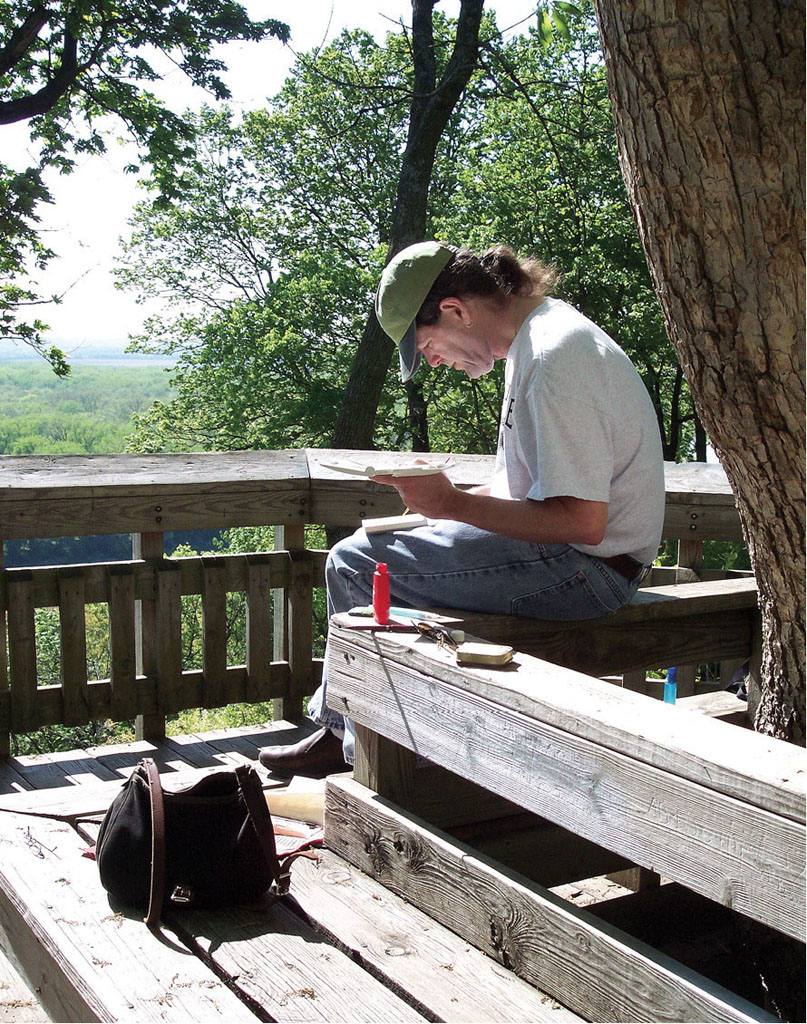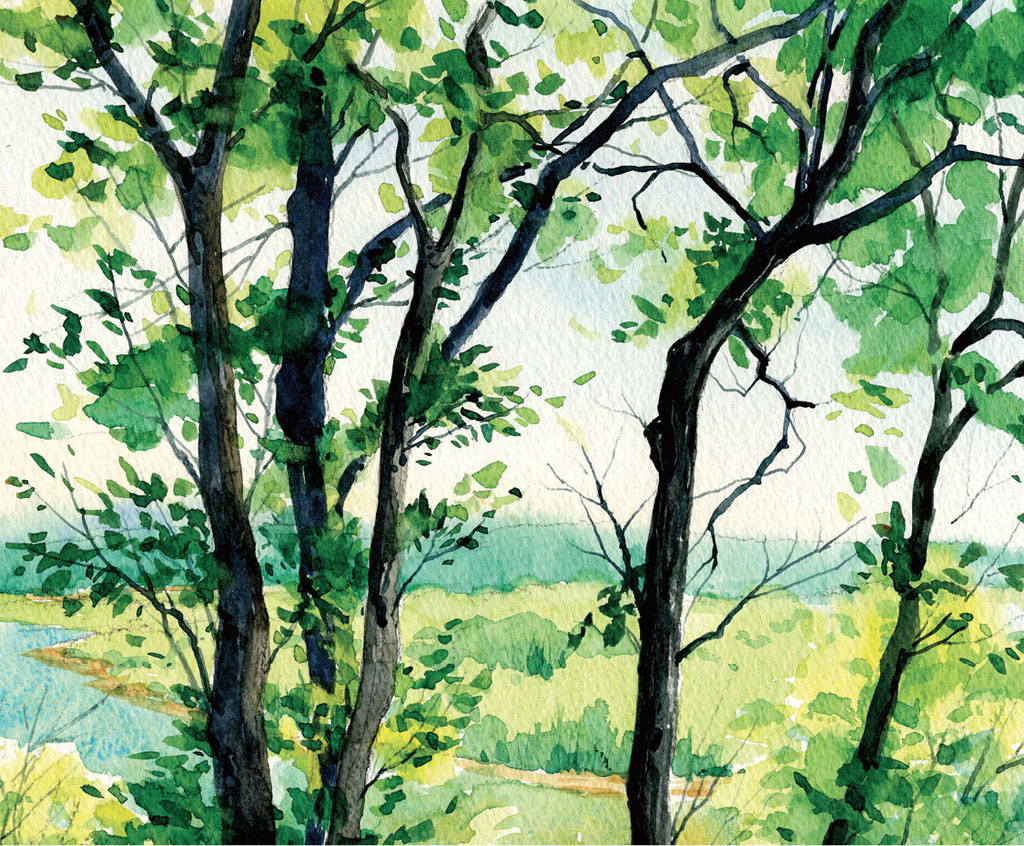
It’s interesting to approach a familiar subject from a different vantage point. Here, we’re looking through the dark foreground trees, with all their sharp detail, to the soft, sunlit Missouri River valley far below. It was a trick suggesting that sense of distance.
Strathmore cold-pressed watercolor block
Burnt Sienna, Cobalt Blue, Manganese Blue Hue, Phthalo Blue, Transparent Yellow, Ultramarine Blue, Yellow Ochre
3⁄4-inch (19mm) flat
no. 5 round with sharpened end

It’s fun to go plein air painting with a partner. Here’s Joseph Ruckman (my partner in every way!), at Weston Bend State Park in northwest Missouri.

The tree shapes and the spaces between them are important so sketch them in first, then lay in the sky and far hills using Manganese Blue Hue and some Cobalt Blue. Allow the deeper blue of the hills to bleed up into the sky so there will be no sharp demarcation—it helps push them into the distance. When that’s dry, add the wooded valley, mixing your greens with Phthalo Blue and Transparent Yellow. Next, for the river, use a stronger mixture using Manganese Blue Hue, Transparent Yellow and a bit of Yellow Ochre. I love the way the settling colors suggest a muddy old river. Finally, add the suggestion of shadows and tree crowns using a richer mix of Phthalo Blue and Transparent Yellow with a bit of Burnt Sienna.

Paint the trunks with a no. 5 round and a strong mixture of Burnt Sienna and Ultramarine Blue to make a lovely deep gray. Scratch the suggestion of bark into the trunks, using the sharpened end of a brush. Use the same sharpened brush to dip into a puddle of paint to delineate the small limbs and twigs. Begin to add the leaves using a small brush and a strong mixture of Phthalo Blue and Transparent Yellow, with a bit of Burnt Sienna added to make a really deep green.

VIEW FROM WESTON BEND’S OVERLOOK
Watercolor on Strathmore cold-pressed watercolor paper
9" × 12" (23cm × 30cm)
Sometimes I think it’s a good thing we get tired working outdoors on the spot. It’s easy to get lost in all the detail and overwork our painting. I hope I stopped in time with this one. The limbs and twigs were so intriguing. I used one of my favorite tools to make the small twigs—the end of a wooden-handled brush that I had sharpened with a pencil sharpener. Dip in a strong wash of Ultramarine Blue and Burnt Sienna, and then drawn onto the paper. The sharp point makes delicate, believable twigs. Quick, small dabs suggest lacy leaves.

Here you can see the finished painting with some of my gear on the shady bench. Stepping back from your work lets you get a bit of perspective and evaluate where you need to go next—if anywhere! I liked how the twigs and leaves looked and decided this was finished.